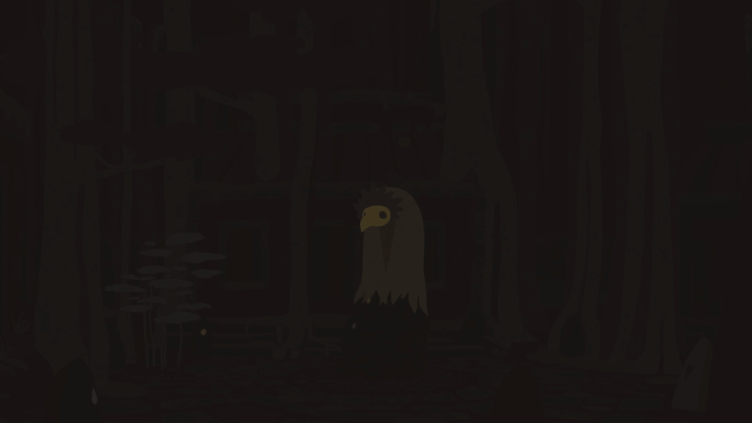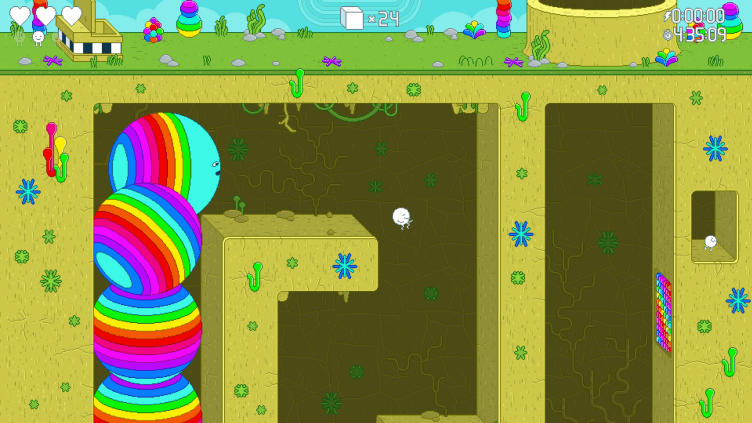Trending
Opinion: How will Project 2025 impact game developers?
The Heritage Foundation's manifesto for the possible next administration could do great harm to many, including large portions of the game development community.

Featured Blog | This community-written post highlights the best of what the game industry has to offer. Read more like it on the Game Developer Blogs or learn how to Submit Your Own Blog Post
A brief overview of a marketing exercise we find useful in narrowing down a game's core messaging.

One of my favorite things to do in these blogs is pull back the curtain a bit about our development, production and marketing processes. By doing that, we hopefully help give other indie studios a little window into what we consider to be important, interesting or helpful uses of our time. Today, let’s talk about a little exercise we call Hooks and Anchors.
Primarily a marketing exercise, Hooks and Anchors helps us collapse the wide, ever-expanding scope of our game into core, fundamental philosophies. The Hook is the novel, the new, and the innovative. It’s the thing your game does that no other game does — the “wow!” factor. It’s the fundamentally unique thing that your game does that no other game has done before it. Conversely, the Anchor is the expected. The familiar. The safe and secure game design that players recognize, understand and love. It’s the thing that says: “This game reminds you of other games you love, so you’ll probably love this too!”
We think both are necessary to sell games — here’s why.

The mystery of Karoo and the island is Mutazione’s hook.
This one gets talked to death but here’s the basic idea: The Hook is the new, innovative, out-there thing that grabs your audience’s attention and brings them into your game.
For many games, this will be a gameplay feature. It will be a type of multiplayer experience that they’ve never experienced before or a new, flashy mechanic that they’ve never seen before. Some high profile examples from recent memory might be the Nemesis System from Middle-Earth: Shadow of Mordor. Players have gone through the process of fighting through a chain of command, but the prospect of fighting NPCs that learned and grew depending on your fights with them created a sense of agency and choice. The decisions that you make matter and the game will react dynamically to them rather than ignore your autonomy to shoehorn you through a linear narrative.
For other titles, this will be aesthetic. Our recently released 2D-precision platformer Spinch, for instance, featured tight jumps and dashes, but the hook was really the art by indie comics artist Jesse Jacobs. Players had seen plenty of platformers from Celeste to Super Meat Boy nail those kinds of platforming fundamentals, but the hypnotic, psychedelic art was unlike anything they’d ever seen. Most of the comments on our Reddit threads and Youtube videos related to Spinch would highlight the art because it stands out so well.
Some games might even sport a narrative hook. Mutazione, our mutant soap opera from last year, hooked players with relatable characters, enticing themes, and clever mysteries. One of the first gifs I made for Mutazione featured Karoo, the mysterious bird spirit that visits Kai in her dreams. That gif attracts attention because it draws players into the mystery of the narrative.
Finding your hook is typically straightforward for indies, because it’s common that we approach our games with innovation and novelty in mind. We want to develop titles that players have never seen before. And especially when we talk to them, we focus on the hook as a way to communicate to a player that they’ll never get this experience anywhere else. From a marketing perspective, it was important that we had a clear understanding of our hook so that we could properly create messaging around the game. Whether that was focusing on the art, design or narrative, it created a leyline that we’d draw power from whenever we got stuck on our messaging going out to players.
That said, we didn’t only spend time on the new and innovative. Sometimes, the familiar can be just as important.

Spinch’s anchor is its tight platforming.
The Anchor plays the opposite role to your hook, but that doesn’t mean it’s any less important. In fact, most devs I spend time with and speak to tend to forget or take their anchor for granted. It’s not flashy or sexy — it’s straightforward, sincere and earnest. The anchor is safe. It’s relatable. It represents security where the hook represents risk. If you talk to ten players, nine of them will say they want new, exciting experiences in their games. But if you look at the play habits of those ten players, they will typically hunker down with old reliable formulas and genres far more often than they break out.
The anchor is there to satisfy this desire. For instance, even while Middle-Earth: Shadow of Mordor broke all kinds of new boundaries with its Nemesis system, it still stayed mostly true to the Assassin’s Creed/Arkham Asylum style combat that many open world action games revelled in at the time. In this way, it stays true to the root of the genre conventions that players know and love. And a player picking up the game has an easily relatable, recognizable experience they can compare to.
For Spinch, our Anchor was the platforming. This type of precision platforming has been a mainstay of indie games since titles like Braid and Super Meatboy blew up almost a decade ago. Players looking for the challenge of those types of titles are going to be swimming in eminently familiar waters when it comes to moving through the six worlds and intermediate levels of Spinch. It isn’t going to generate the kinds of comments on Youtube that the art did, but it will drive the most hardcore players. Speedrunners became submerged in Spinch easily and became some of the game’s most diehard fans. They are fans because of its anchor after being brought in by the hook.
Every game has familiar and relatable elements. Often times, it’s the genre or the core gameplay mechanics that players expect to experience when they first boot up your game. This is your anchor, and it’s just as important to communicate to players as your hook. For every one of our titles, we create a brief, concise phrase to describe it in fundamental terms. Spinch is a 2D precision platformer. You’ll see that all over our writing for the game. I even used it in the previous section. Gone Viral is a roguelite brawler. GRIME is a soulslike metroidvania. These all communicate the anchor of the experience to players and often serve as the bedrock to a player’s understanding of the game.
Combining the hook and anchor into a single message allows you to efficiently communicate the core of your game to any potential player in just a handful of words. It will show them the relatable experience that they know and love, the tried and true, and the sensible shoes of a your game. At the same time, it communicates the out there, the unique, the novel, and the “I’ve never seen anyone do this before but, man, what an awesome idea!” This helps you empower your advocates to share the game among their friends and colleagues. If you’ve communicated your message well, one player can share their experience with dozens of others.
That kind of spread is tremendously powerful.
As always, if you want to connect with us, feel free to do so on Twitter, Facebook, Instagram or Discord! I’d be happy to answer any questions you might have about our approach to hooks and anchors! Special thanks to our friend, Chris Zukowski for turning us on to anchors in the first place! His blog on the subject is amazing and definitely deserves a read.
Read more about:
Featured BlogsYou May Also Like